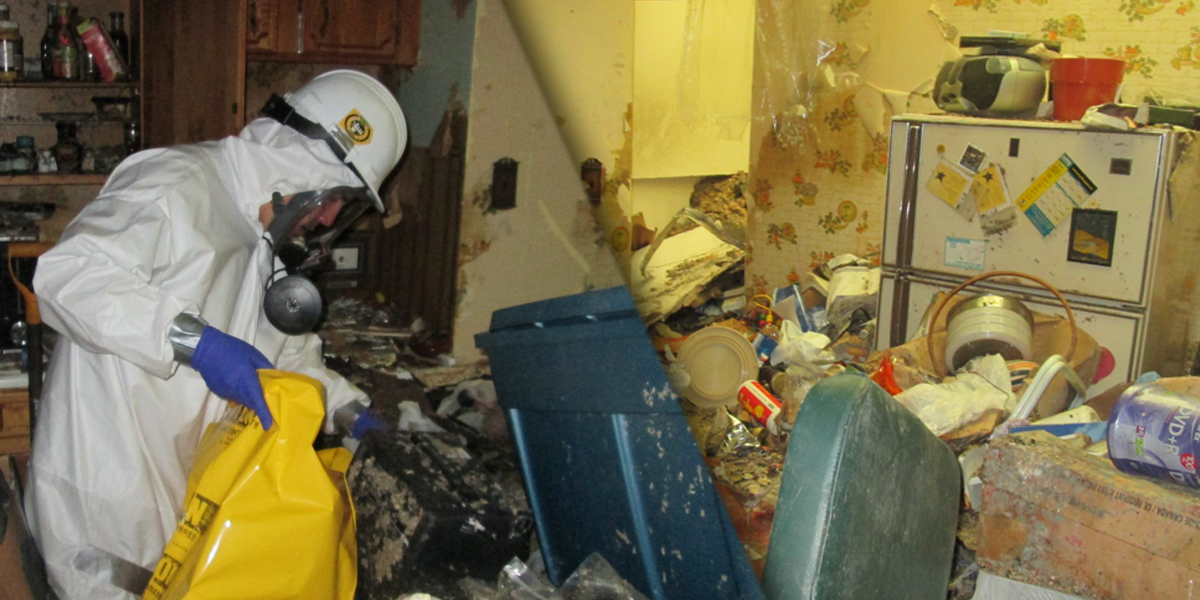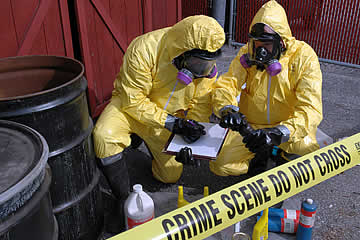Flood Damage Restoration: Quick and Effective Recuperation for Your Home
Flood Damage Restoration: Quick and Effective Recuperation for Your Home
Blog Article
Professional Biohazard Clean-up for Crime Scenes, Injury Incidents, and Infected Spaces
In the world of expert biohazard clean-up, precise interest to information and adherence to safety and security methods are paramount. As we dive right into the ins and outs of biohazard cleaning for these sensitive environments, a much deeper understanding of the difficulties and important procedures entailed will certainly emerge, dropping light on the indispensable role of professional cleaning solutions in bring back safety and tranquility of mind.

Significance of Biohazard Cleanup
Biohazard cleaning following criminal offense scenes and trauma cases is important for ensuring the safety and security of individuals and the setting. When these incidents happen, they frequently leave a variety of biohazards such as blood, bodily liquids, and various other potentially infectious materials. These compounds can nurture unsafe microorganisms like microorganisms and viruses, posturing major wellness risks if not appropriately cleansed and sanitized.
Specialist biohazard cleaning solutions are trained to deal with these harmful materials safely and efficiently. They have the needed tools, such as individual protective gear and specialized cleaning up agents, to completely sanitize the impacted areas. By entrusting the clean-up to skilled experts, people can prevent exposure to unsafe pathogens and prevent the spread of infectious diseases.
Moreover, appropriate biohazard clean-up is vital for safeguarding the atmosphere. Improper disposal of biohazardous materials can contaminate soil, water resources, and air, posing a danger to wildlife and the community. By following strict cleaning methods, professionals can ensure that biohazards are securely eliminated and disposed of according to laws, reducing the risk of environmental contamination.
Kinds Of Biohazards Encountered
Numerous dangerous products commonly experienced in criminal activity scenes and injury events existing substantial health and wellness threats otherwise dealt with correctly. Blood and physical fluids are among one of the most typical biohazards found in these scenarios. These fluids can carry pathogens such as HIV, liver disease B and C, and other unsafe bacteria. In addition, cells, organs, and body components can also posture severe wellness hazards because of potential contamination.
One more kind of biohazard typically encountered is sharp objects like needles, busted glass, and various other items that can trigger injuries and send infections. Chemical threats are likewise a concern, as criminal offense scenes might contain substances like tear gas, pepper spray, or medication production products that require specific handling and disposal procedures to avoid further damage.
Furthermore, mold and microorganisms development can occur in spaces where decay or extended direct exposure to wetness has happened. These bacteria can release toxic substances and allergens right into the air, posturing respiratory system risks to those exposed. Overall, biohazard cleanup experts need to be trained and well-equipped to properly manage these various types of harmful products to make sure the safety of themselves and others.
Tools and Safety Gear
When dealing with the essential job of handling biohazards run into in crime scenes and trauma occurrences, the utilization of correct tools and safety gear is extremely important to ensuring the safety of people associated with the cleanup procedure. Individual protective tools (PPE) such as handwear covers, coveralls, masks, and goggles are important to protect against straight contact with possibly damaging compounds. Respirators are vital when taking care of biohazards that may come to be airborne, protecting employees from breathing in harmful particles. Specialized cleansing tools like biohazard bags, anti-bacterials, and sharps containers are needed for the risk-free collection and disposal of contaminated products. Additionally, durable equipment such as industrial-grade cleaner, foggers, and ozone generators might be needed to extensively sterilize the damaged location. Guaranteeing that all tools is correctly maintained, frequently examined, and made use of according to safety guidelines is essential in lessening the danger of direct exposure to biohazards during clean-up procedures.
Cleaning Refine and Strategies
Reliable and comprehensive cleaning of biohazardous products from criminal offense scenes and injury incidents calls for thorough focus to information and adherence to rigorous safety and security methods. The cleaning process normally includes a number of crucial steps. Initially, the location needs to be analyzed to establish the level of contamination and the proper cleaning techniques required. Next off, all biohazardous products, including blood, physical liquids, and tissue residues, should be thoroughly removed and disposed of based on neighborhood laws.
Following the elimination of biohazardous materials, the damaged area undergoes a detailed cleansing and sanitation procedure. This action involves making use of specialized cleaning up agents and devices to ensure that all traces of contamination are gotten rid of. After cleaning, the location is subjected to extensive testing to confirm that it is risk-free and free of any remaining biohazards.

Decontamination and Disposal Treatments
To ensure thorough purification and correct disposal of biohazardous materials, complying with the precise cleanup process, particular treatments must be diligently followed with stringent adherence to safety procedures. Decontamination entails the removal or neutralization of pollutants to lessen the danger of direct exposure and spread of dangerous substances. This procedure generally includes cleansing, disinfecting, and disinfecting the damaged location utilizing specialized tools and EPA-approved chemicals.
As soon as purification is completed, correct disposal of biohazardous materials is crucial to avoid more contamination or harm. Biohazardous waste, such as physical liquids or blood-soaked materials, need to be very carefully collected, packaged, and labeled according to governing standards. ATP testing. These products are after that transferred to accredited centers for disposal via ideal channels, making sure conformity with local, state, and federal policies

Verdict
In conclusion, expert biohazard clean-up is vital for guaranteeing the effective and risk-free removal of harmful products from criminal activity scenes, trauma events, and contaminated home areas. By utilizing specific devices, protective biohazard blood cleanup gear, and adhering to proper cleaning procedures and techniques, biohazard cleanup groups can efficiently get rid of and decontaminate of biohazards, reducing the risk of direct exposure and damage to individuals and the atmosphere.
As we dive into the intricacies of biohazard cleanup for these delicate settings, a much deeper understanding of the challenges and essential procedures included will emerge, dropping light on the crucial function of expert clean-up solutions in bring back safety and security and peace of mind.
Specialist biohazard clean-up services are educated to manage these unsafe products securely and properly. By complying with strict cleaning methods, professionals can make sure that biohazards are safely gotten rid of and disposed of in accordance with laws, minimizing the danger of environmental contamination.
On the whole, biohazard cleaning professionals should be skilled and well-equipped to effectively deal with these numerous kinds of dangerous materials to guarantee the safety and security of themselves and others.
When addressing the vital job of handling biohazards encountered in criminal offense scenes and trauma events, the utilization of correct tools and protective continue reading this equipment is critical to making certain the safety and security of people included in the cleanup process.
Report this page